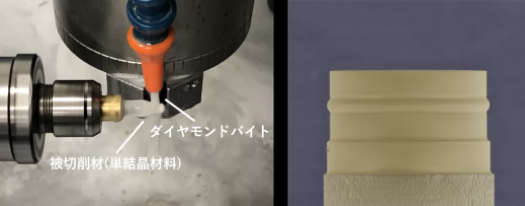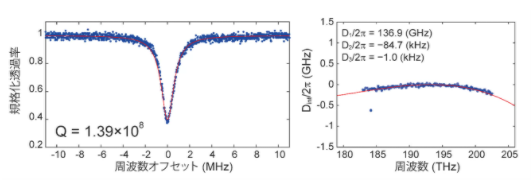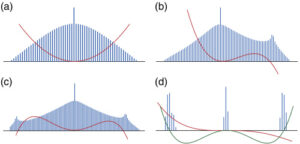Fabrication of high Q-value single-crystal micro optical resonators by ultra-precision machining
Research
Fabrication of high Q-value single-crystal micro optical resonators by ultra-precision machining
Opening New Possibilities for Resonator Decentralized Control
Optical resonators are known as elements for confining light using the resonance phenomenon, and are called "resonators" from "cavity" and "resonant" in English. It is called a "resonator" from "cavity" and "resonant. The simplest optical resonators confine light by repeatedly reflecting it between a pair of mirrors. Our research aims to fabricate very small, high-performance optical resonators for use in lasers, spectrometers, sensors, and other devices.
Such devices are called high-Q micro optical resonators, and their fabrication requires various advanced technologies such as semiconductor processing, polishing, and laser processing. The Q-value refers to the performance index of the resonator, and the longer it can confine light, the higher the Q-value. In general, fabrication of micro optical resonators with a high Q-value requires processing of glass, silicon, and fluoride materials with a precision equivalent to the wavelength of light.
In collaboration with the Kakinuma Laboratory of the Department of Systems Design Engineering, we have succeeded for the first time in the world in fabricating single-crystal micro optical resonators with a high Q-value exceeding 100 million by using ultra-precision machining technology. Traditionally, single-crystal micro optical resonators made of fluoride materials and other materials have been fabricated by polishing. However, while this method can achieve high Q-values, it is difficult to control the structure with micrometer-order precision. Microstructure control is closely related to wavelength dispersion, which is particularly important when applied to microfrequency comb laser technology. Although there have been attempts to fabricate micro optical resonators using precision machining, they have been considered unsuitable due to surface roughness problems. In this study, we analyzed the crystal structure of fluoride materials and optimized the machining conditions to achieve both a high Q-value comparable to that of polished materials and structural controllability.
This method is of great value not only for basic research, such as microfrequency combs, but also for industrial applications, because it enables the reliable fabrication of high-performance micro optical resonator elements.

Figure 1: (Left) Experimental setup for ultra-precision machining (Right) Fabricated magnesium fluoride micro optical resonator

Figure 2: (Left) Measured results of the world's highest optical resonance spectrum (blue) and its fitting (red)
(Right) Measured wavelength dispersion confirming structural controllability (blue: experimental values, red: theoretical values)
- Categories
- 研究トピックス



